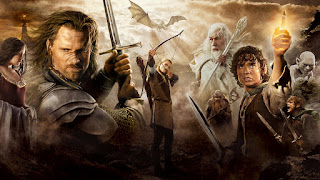Today's game review is of the 2016 release, Archaeology: The New Expedition. For 2-5 players, it plays in 40 minutes.
Overview
In the Egyptian-themed Archaeology: The New Expedition, your goal is to collect sets of treasure cards and sell them to a museum. You collect through 'digging' (drawing cards), trading (at the marketplace), or exploring (monuments). But beware: thieves and sandstorms can deprive you of hard-won treasures. So do you sell what you have, or press your luck and hold out for greater profit?
Each treasure card has a:
- title
- trade value
Upper right and left corners, this is its worth in exchange at the marketplace
- quantity
Lower center, this tells you how many total treasure cards of that type there are in the game. This shows rarity and helps you guess your odds at finding more.
- sale value
Bottom, this shows how much money you earn when you sell to the museum. If you sell multiple copies of a card, you earn more money as indicated on the card.
 |
| some treasure cards; image from here |
Simplified Gameplay
Setting up the game first requires tuning the card pool based on the number of players (remove tent, thief, sandstorm, and map cards and adjust quantities of certain treasure cards). After numbers are adjusted,
- deal 4 treasure cards and 1 tent card to each player
- place 5 treasure cards face-up in the marketplace
- choose 1 monument tile at random (there are 6 possibilities) and place treasure cards around it according to its game text
Then, a portion of the thief and sandstorm cards (again, quantities will vary based on players) and all map cards are returned to what remains of the card pool to form the 'dig pile,' and you're ready to begin!
 |
| a game after setup; image from here |
- Dig for treasure (draw a card from the dig pile)
- Take the card into hand unless it's a thief or sandstorm- play those according to the rules
- Trade at the marketplace if desired
- Use one or more cards to trade for one or more cards in the market
- Add up the trade value(s) of the card(s) you wish to exchange; the total must equal or exceed the trade value(s) of the card(s) you desire in the market
- Explore a monument if desired (once per turn max)
- Discard the appropriate number of map cards to look at/take pile(s) of monument's treasure cards as prescribed on the monument tile
- Sell to the museum if desired
- Place cards (probably sets of cards) face-up in front of you to indicate sale to the museum
- Once sold, cards cannot be stolen or lost
After his turn is done, play proceeds clockwise. Once the dig pile is empty, turns continue (minus step 1, of course) until all players have no cards left in their hands. Then, point totals are tallied for each player for the cards they sold to the museum. The highest score wins!
Review
This is a nice little game. Setup is a bit clunky (removing/re-inserting cards was initially confusing), but the game flows nicely and players pick up the concept quickly. As a set collection/press your luck game, this is effectively a variant of Rummy, with enough twists (with monument tiles, varying card rarities, and thief/sandstorm cards) to keep things fresh and interesting. Overall, this one is recommended.
Rating: A
















































